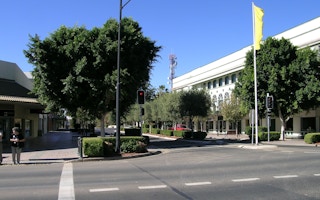A proposal to develop an open-source roadmap for how to finance and deliver a zero net energy town in a regional New South Wales area is currently out to tender. And among the finance options under consideration is the Environmental Upgrade Agreement model.
The NSW Office of Environment and Heritage has provided $80,000 for the tender fee for the ZNET, with possible test cases, Moree, Uralla, Guyra and Quirindi.
Executive director of facilitator Starfish Initiatives Adam Blakester said the blueprinting process will involve looking at financing models, including local investment , finance offered by technology companies and EUAs.
“Our gold star standard in terms of the financing model for ZNET is as a high level of community ownership and governance as possible, so we will probably end up with a hybrid of different streams of finance,” he said.
“Part will be private, and build on what’s been done on the private household level, such as energy efficiency initiatives like installing efficient lighting, variable speed pumps and embedded photovoltaics, that are owned by the property owner.”
A triple-bottom-line approach
Mr Blakester said the ZNET project would focus on a triple bottom line approach, as it will enable communities to develop clean energy projects, reduce energy costs and generate jobs with intellectual property outcomes to be delivered as common open-source rather than as owned IP.
“
We’re about creating the commons, from ecosystem services through to knowledge
Adam Blakester, Executive director of Starfish Initiatives
“We’re about creating the commons, from ecosystem services through to knowledge,” Mr Blakester said.
Mr Blakester said he believed it was important for towns to be part of the grid.
“We are aiming for a hybrid model with access to the main energy market, as the grid is the internet for energy. Our argument has always been to work with the state-owned networks, to work the relationship out and be proactive.
“For us, sustainability is networked; it’s not islands.”
Participants
Joining Starfish Initiatives, a not-for-profit social benefit enterprise in the consortium are the NSW OEH Regional Development Australia Northern Inland and experts from across sustainable development, renewable energy, finance and community engagement.
Mr Blakester said the tender proposal had taken a year and a half to develop.
The consortium also includes former board member of Country Energy, John Wearne; NSW Trade and Investment; Institute for Rural Futures at the University of New England; Northern Inland Sustainable Business Network; and the office of Tablelands MP Alan Marshall.
An advisory panel includes Mark Byrne from the Total Environment Centre, ICT expert Alun Davies, engineer Dr Chris Blanksby, David Woodgrove from Sustainable Regional Australia, Murray Hogarth from WattWatchers and Green Capital, Ken Davies from Bioenergy Villages, Kristian Handberg from Percepscion, Michael Brennan from Clarence Consultants and James Felton-Taylor from Australian Renewable Timbers.
Starfish Initiatives
Starfish Initiatives focuses on improving sustainability in regional and rural areas through bringing together expertise and stakeholders and projects include stakeholder and community engagement work such as the Ballina Major Regional Centre Strategy, preparing the Northern Inland Regional Development Plan, New England Sustainability Strategy, and the business plan for the Myall Creek Centre for Reconciliation.
The organisation’s board includes Dr Navjot Bhullar of UNE; Steven Gow, a former president of SOS Liverpool Plains; Carol Mackerras, Andrew Kirk; and Adam Blakester.
Partner organisations include the Institute of Sustainable Futures at UTS in Sydney, the University of New England, Community Mutual Group, the Environmental Defenders Office Northern Rivers, Total Environment Centre, and a range of funding partners including councils, NSW Government, Embark Australia and the Diversicon Environment Foundation.
Starfish was heavily involved in setting up the Coalition for Community Energy, and also in the development of the Hepburn Springs community wind farm project, New England Wind in NSW, Farming the Sun and the North Coast Energy Forum.
Mr Blakester said that at the CCE’s inaugural national congress in Canberra this year, one of the keynote speakers was Arno Zengerle, the Mayor of Wildpoldsried in Germany. The town’s renewable energy initiatives have resulted in it generating 200 to 300 per cent more energy than it uses, and this is fed into the main grid.
“I asked him, how has this changed your town? And he said, ‘Adam, people are renovating their kitchens’,” Mr Blakester said.
“In a town like so many in Australia, where agriculture has been the biggest economic sector, and it has become globalised and centralised, with less people on the family farms, so the towns have been in decline for decades with people moving away, and people passing away and no babies born to replace them, and the houses are becoming run down and the shops are closed down for longer periods, for people to be renovating their kitchens that says they have a desire to want to be there, an optimism about being there and some confidence in the future.”
Mr Blakester said that there is ample research that shows where community-owned enterprises are supported by good governance, they generate multiple jobs and economic benefits, and lead to better social and environmental outcomes.
Starfish is working on more than half a dozen community-level clean energy initiatives with the Office of Environment and Heritage and Regional Development.
The state government’s initiative to create a network of precinct energy coordinators, who can work collaboratively with entities such as ZNET towns is an example of “what’s possible with government.”
“The Regional Clean Energy program is genuinely collaborative. It’s important to give the state government kudos for the courage,” Mr Blakester said.










